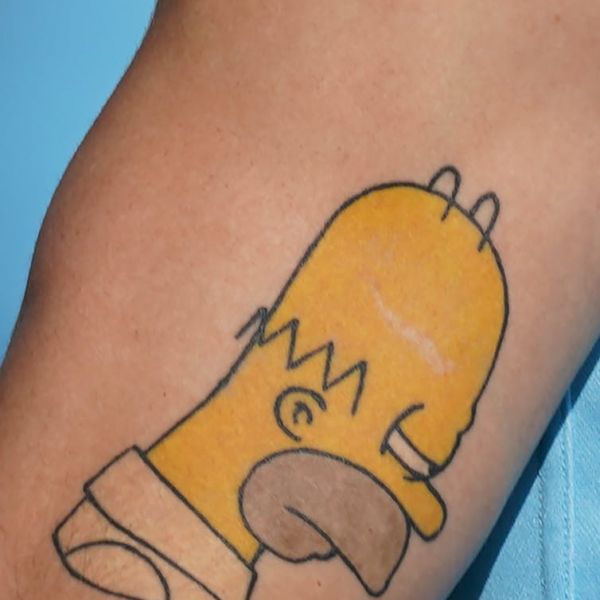Who owns the copyright to your tattoo?
By Marie Hadley
The Australian Copyright Agency has licensed an Indigenous artwork for a custom tattoo. It is the first instance of tattoo licensing for the agency, and perhaps Australia at large.

The agency granted a licence for Jarrangini (buffalo) (2018) by Tiwi artist Chris Black following consultation with the artist, the Jilamara Arts and Crafts Association, and other senior Indigenous artists. Darwin tattooist Ryan Birkinshaw applied the buffalo print to the arm of art gallery manager and artist Katie Hagebols.
In an industry beset by appropriation – of Indigenous and Western imagery – the licensing of this artwork is a rare sign of respect for the intellectual property rights of artists. In the Australian tattoo industry, licences govern the use of tattoo stencils, pre-produced images known as “flash”. But the practice of licensing for custom tattoos – one-off original designs created specifically for clients – is virtually non-existent. Copying usually occurs without any thought given to obtaining a licence.
The Jarrangini (buffalo) licence recognises that tattoo is an artform regulated by copyright law.
Tattoo copyright
There are no Australian cases that directly confirm copyright exists in tattoos. However, a drawing in ink falls within the definition of “artistic work” in s 10(1) of the Copyright Act. A tattoo will be copyright so long as it does not copy a substantial part of another artwork.
In Australia, the person who reduces the artwork to “material form” is the default copyright owner. This means that the tattooist is usually the first copyright owner of a custom tattoo because they are the person who draws it, or tattoos it directly on the skin.
A tattoo wearer might also hold joint ownership rights, if they contribute more to the design process than just ideas. They might actively collaborate in the refinement of a design, for example, by deleting some aspects and drawing the replacement’s features together with the tattooist.
In New Zealand, more restrictive rules around commissioned art and copyright mean a paying client can be the first copyright owner of a custom tattoo, regardless of whether they actively contributed to the design process.
Australia’s commissioned art rules do not apply to drawings as a category of artistic work. Thus tattoos are excluded from them. (Interestingly, there is an exception here when it comes to portraits, with the copyright for tattoo portraits likely owned by the person who paid for it).
In both countries, where a tattooist creates a design in the course of their employment, their employer will be the copyright owner. All of these rights can be varied by contract.
Marie Hadley is affiliated with the University of Newcastle
This article was originally published at The Conversation. Read the full article.
Related news
- Healthy recognition: Dietitian earns prestigious Australian science honour
- Nine Newcastle teams secure $5.4m in ARC Discovery grants to unearth new knowledge
- Heart of the problem is short lifespan of disease prevention programs
- Community collaboration takes flight in bird opera workshop
- Grand Challenge winners share in $30
The University of Newcastle acknowledges the traditional custodians of the lands within our footprint areas: Awabakal, Darkinjung, Biripai, Worimi, Wonnarua, and Eora Nations. We also pay respect to the wisdom of our Elders past and present.